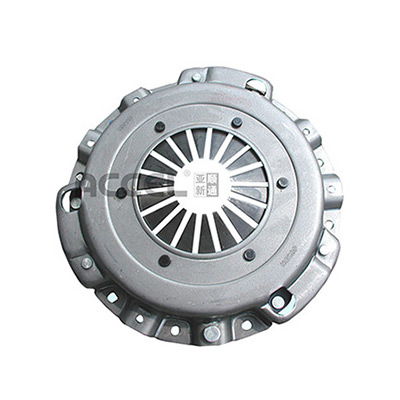- Arabic
- French
- Russian
- Spanish
- Portuguese
- Turkish
- Armenian
- English
- Albanian
- Amharic
- Azerbaijani
- Basque
- Belarusian
- Bengali
- Bosnian
- Bulgarian
- Catalan
- Cebuano
- Corsican
- Croatian
- Czech
- Danish
- Dutch
- Afrikaans
- Esperanto
- Estonian
- Finnish
- Frisian
- Galician
- Georgian
- German
- Greek
- Gujarati
- Haitian Creole
- hausa
- hawaiian
- Hebrew
- Hindi
- Miao
- Hungarian
- Icelandic
- igbo
- Indonesian
- irish
- Italian
- Japanese
- Javanese
- Kannada
- kazakh
- Khmer
- Rwandese
- Korean
- Kurdish
- Kyrgyz
- Lao
- Latin
- Latvian
- Lithuanian
- Luxembourgish
- Macedonian
- Malgashi
- Malay
- Malayalam
- Maltese
- Maori
- Marathi
- Mongolian
- Myanmar
- Nepali
- Norwegian
- Norwegian
- Occitan
- Pashto
- Persian
- Polish
- Punjabi
- Romanian
- Samoan
- Scottish Gaelic
- Serbian
- Sesotho
- Shona
- Sindhi
- Sinhala
- Slovak
- Slovenian
- Somali
- Sundanese
- Swahili
- Swedish
- Tagalog
- Tajik
- Tamil
- Tatar
- Telugu
- Thai
- Turkmen
- Ukrainian
- Urdu
- Uighur
- Uzbek
- Vietnamese
- Welsh
- Bantu
- Yiddish
- Yoruba
- Zulu
Nov . 20, 2024 17:11 Back to list
small drive belts
Understanding Small Drive Belts An Essential Component of Machinery
Small drive belts are often an overlooked yet crucial component in the operation of various machines and equipment. These belts are essential for transmitting power from one component to another, typically across a rotational system. In this article, we will explore the importance of small drive belts, their applications, types, and maintenance practices to ensure optimal performance.
What Are Small Drive Belts?
Drive belts are flexible loops of material that facilitate motion and power transmission in mechanical systems. Small drive belts are specifically designed for applications where space is limited or where lightweight and compact designs are necessary. They play a vital role in numerous devices, ranging from household appliances like vacuum cleaners and washing machines to industrial machinery and automotive systems.
Applications of Small Drive Belts
1. Automotive Industry In vehicles, small drive belts can be found in serpentine belt setups, which help drive various accessories, including the alternator, power steering pump, water pump, and air conditioning compressor. Their reliable performance is crucial for the smooth functioning of these components.
2. Power Tools Many handheld power tools utilize small drive belts to transfer power from the motor to the tool head. This is commonly seen in devices like drills, saws, and sanders where efficiency and torque are essential.
3. Household Appliances Small drive belts are prevalent in appliances such as washing machines and food processors. They facilitate the movement of components, allowing the devices to perform their functions with efficiency and effectiveness.
4. Industrial Equipment In manufacturing processes, small drive belts can be integral to conveyor systems, packaging machines, and other automated machinery. They ensure precise movement and timing in operations, which is critical for productivity.
Types of Small Drive Belts
Small drive belts come in various types, each designed for specific purposes
1. V-Belts Characterized by their trapezoidal shape, V-belts provide a secure grip in pulleys. They are widely used in both industrial and automotive applications for their ability to transmit high power loads.
small drive belts

2. Timing Belts These belts have teeth that fit into corresponding grooves on pulleys, ensuring synchronized movement between components. Timing belts are crucial in applications where timing is critical, such as engine operations.
3. Flat Belts Flat belts are simple, without any grooves or teeth. They are often used in applications where a smooth surface is required for friction to transmit power effectively.
4. Round Belts These cylindrical belts provide flexibility and are typically used in small equipment like printers and certain types of conveyor systems.
Maintaining Small Drive Belts
Proper maintenance of small drive belts is essential to extend their lifespan and ensure optimal performance in machinery. Here are some best practices
1. Regular Inspections Check belts for signs of wear and tear, such as cracks, fraying, or stretching. Early detection of issues can prevent failures.
2. Proper Tensioning Ensure belts are correctly tensioned during installation. Both loose and overly tight belts can lead to premature wear and decreased efficiency.
3. Cleanliness Keeping the surrounding area clean, free of dust and debris, can help maintain the integrity of the belts. Additionally, avoid using oils or lubricants that may compromise the belt's grip on the pulleys.
4. Replacement No matter how well they are maintained, belts will eventually wear out and need replacement. Follow manufacturer recommendations for replacement intervals based on usage and operating conditions.
Conclusion
Small drive belts are indispensable components of various mechanical systems, significantly impacting the performance and efficiency of numerous machines. Understanding their types, applications, and maintenance can enhance the longevity and functionality of your equipment. By paying attention to these essential components, you can ensure that your machines operate smoothly and effectively, ultimately leading to improved productivity and reduced downtime.
-
Upgrade Power Steering Pump Belt for Smooth, Quiet Operation
NewsAug.27,2025
-
Precision Timing Belt & Chain: Engine Performance & Durability
NewsAug.26,2025
-
Precision Lathe Drive Belts: Durable & Reliable Performance
NewsAug.25,2025
-
84.5 Serpentine Belt: Durable & Precision Fit for Your Engine
NewsAug.24,2025
-
Premium Ribbed Drive Belts for Quiet Power Transmission
NewsAug.23,2025
-
High-Performance Vehicle Timing Belt for Engine Precision
NewsAug.22,2025

